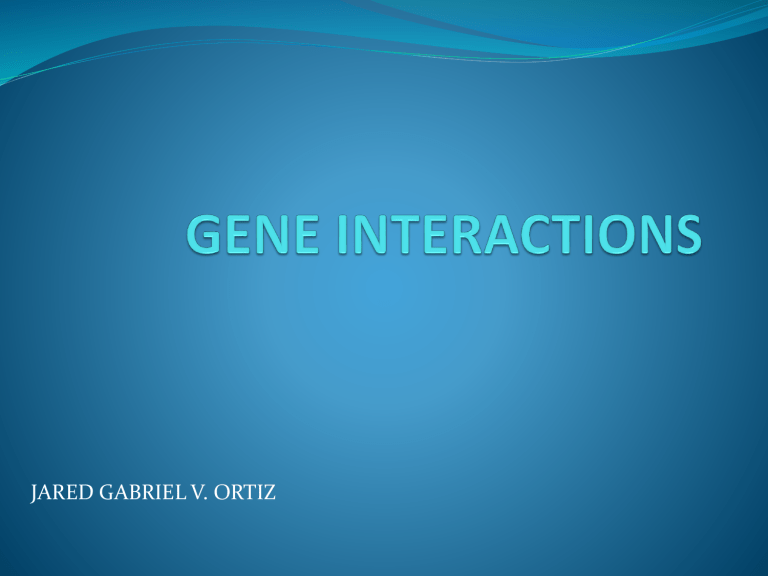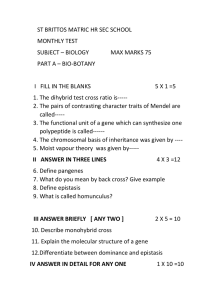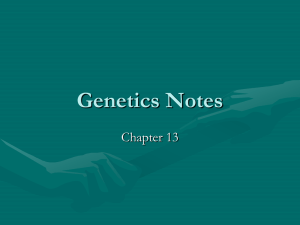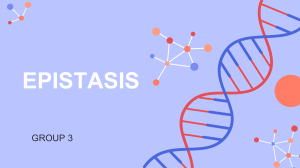
JARED GABRIEL V. ORTIZ
A gene is a unit of hereditary information. Except in some viruses, genes are made up of DNA , a complex molecule that codes genetic information for the transmission of inherited traits.
Alleles are also genetic sequences, and they too code for the transmission of traits.
When the copies of a gene differ from each other, they are known as alleles.
Novel Phenotypes
A novel phenotype is a new or different feature (trait) of an organism. These traits come from the different ways genes combine and interact with each other in a process called epistasis. Some examples of epistasis are the shape of chicken’s combs, wheat kernel colors, and coat colors in horses.
Recessive Epistasis
In recessive epistasis, Gene A is recessive. (A recessive gene is one that is masked by a dominant gene; that is, it will only express if there are two copies of the recessive allele.) Thus, we need two copies of the recessive allele at Gene A for it to override Gene B.
Dominant Epistasis
Dominant epistasis happens when the dominant allele of one gene masks the expression of all alleles of another gene. If an organism inherits one or two copies of the dominant allele, they will have the trait.
Complementary Genes
Complementary genes are genes that both contribute to a single characteristic, where both genes can mask the effect of the other. You may also think of complementary genes as any instance in which dominant forms of both genes are required for the dominant characteristic to be seen.
Duplicated Genes
Each of the different types of keratin found throughout the body are expressed by different genes that are duplicates of each other. Gene duplication happens when an extra copy of a gene is made in an organism's genome.
Reference:
https://www.nature.com/scitable/topicpage/epistasisgene-interaction-and-phenotype-effects-460
https://www.britannica.com/science/epistatic-gene
https://learn.genetics.utah.edu/content/pigeons/epist asis/
https://www.ndsu.edu/pubweb/~mcclean/plsc431/me ndel/mendel6.htm
https://bio.libretexts.org/Bookshelves/Genetics/Book
%3A_Online_Open_Genetics_(Nickle_and_Barrette-
Ng)/06%3A_Genetic_Analysis_of_Multiple_Genes/6.2
%3A_Epistasis_and_Other_Gene_Interactions







